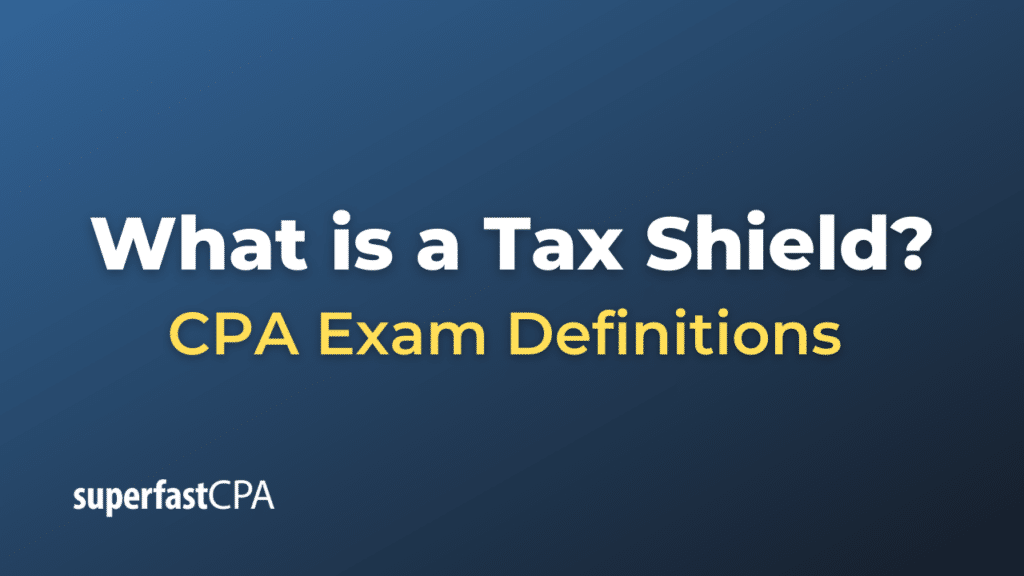Tax Shield
A tax shield is a reduction in taxable income achieved through the ability to deduct certain expenses, payments, or depreciation against one’s taxable income. In essence, a tax shield allows individuals or corporations to protect a portion of their income from being subjected to taxes, thus “shielding” it.
Tax shields are an essential component of corporate finance and investment decisions. They can enhance a project’s or investment’s value by reducing the associated tax liability. The concept is particularly relevant when assessing the cost of capital, as interest payments on debt (for instance) can provide a tax shield which, in turn, can make debt financing more attractive.
Common sources of tax shields include:
- Interest Expenses : For many companies, the interest paid on debt is tax-deductible. This means that by taking on debt, companies can reduce their taxable income by the amount of the interest they pay.
- Depreciation and Amortization: Companies can deduct the depreciation of tangible assets (like machinery or buildings) and the amortization of intangible assets (like patents or goodwill) from their taxable income.
- Investment Losses : Some tax systems allow companies or individuals to deduct certain investment losses against their taxable income.
- Charitable Contributions: Both individuals and corporations can often deduct charitable donations from their taxable income, up to certain limits.
- Business Expenses: Most tax systems allow businesses to deduct legitimate business expenses from their revenue, which reduces their taxable profit.
The value of a tax shield often depends on the taxpayer’s marginal tax rate. For example, if a company can deduct $1 million in interest expenses and has a marginal tax rate of 30%, this interest tax shield would be worth $300,000 ($1 million x 30%).
Understanding tax shields is crucial for making informed investment and financing decisions, as they can significantly affect the after-tax return or cost of different financing options.
Example of a Tax Shield
Let’s delve into a straightforward example involving a tax shield resulting from interest expenses.
Scenario:
Company ABC has taken out a loan, and as a result, it incurs an annual interest expense of $500,000. The corporate tax rate for Company ABC is 30%.
Without Interest Expense:
Suppose Company ABC has an operating income (or earnings before interest and taxes, EBIT) of $2 million. Without considering the interest expense, its taxable income would be:
Taxable Income = EBIT = $2 million
Tax Liability = 30% of $2 million = $600,000
With Interest Expense:
Now, consider the interest expense, which acts as a tax shield:
Taxable Income = EBIT – Interest Expense
Taxable Income = $2 million – $500,000 = $1.5 million
Tax Liability = 30% of $1.5 million = $450,000
Difference:
Because of the interest expense, Company ABC’s tax liability decreases by:
Tax Savings = $600,000 (without interest expense) – $450,000 (with interest expense) = $150,000
So, the tax shield provided by the interest expense is $150,000.
Analysis:
In this example, Company ABC effectively reduces its tax liability by $150,000 by having debt that incurs an interest expense. This reduced tax obligation is the value of the interest tax shield. When evaluating whether to finance through debt or equity, such tax considerations can play a pivotal role. The tax shield can make debt a more attractive option, as it lowers the effective cost of debt for the company.













